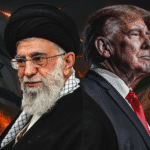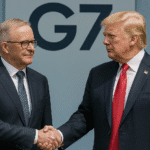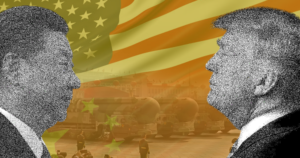by: The Washington Eye
In a world defined by geopolitical rivalries and the constant threat of war, nuclear power stands as one of the most formidable and controversial forces. As of 2025, nine countries officially possess nuclear weapons, while over 30 others use nuclear energy for civilian purposes such as electricity generation. This dual role of nuclear technology capable of both immense destruction and energy production makes it a cornerstone of global diplomacy, defense, and debate.
The nine nuclear-armed states include the United States, Russia, China, France, the United Kingdom, India, Pakistan, North Korea, and Israel. These nations maintain their arsenals as deterrents, claiming they ensure national security and global stability. Russia currently holds the largest number of nuclear warheads, estimated at approximately 5,580, with around 1,710 deployed strategically. The country has also invested heavily in modernizing its arsenal with advanced technologies like hypersonic missiles and underwater nuclear drones. The United States follows closely, with about 5,244 warheads and a powerful nuclear triad that includes land-based missiles, strategic bombers, and submarine-launched weapons. The U.S. remains the only country to have ever used nuclear weapons in conflict, during World War II in Hiroshima and Nagasaki.
China, with over 500 warheads, is rapidly expanding its nuclear capabilities and is projected to double its arsenal by the 2030s. While Beijing officially adheres to a “no first use” policy, its growing nuclear power has raised concerns, especially amid escalating tensions with the United States. France maintains about 290 warheads, primarily deployed on submarines and aircraft, and remains the only EU country with nuclear arms following Brexit. The United Kingdom possesses roughly 225 warheads, mostly deployed through the Trident submarine-based system, and has announced intentions to increase its stockpile cap for the first time in decades.
India and Pakistan, long-time regional rivals, each hold around 170 warheads. India follows a “no first use” doctrine but retains a credible second-strike capability. Pakistan, on the other hand, is believed to have one of the fastest-growing nuclear programs in the world, with a focus on tactical nuclear weapons aimed at countering India’s conventional superiority. North Korea is estimated to have about 50 nuclear warheads, although the exact number and their effectiveness remain uncertain. Pyongyang continues to conduct missile tests in defiance of international sanctions and condemnation. Israel, though never officially confirming its arsenal, is widely believed to possess between 80 and 90 nuclear warheads, maintaining a policy of strategic ambiguity. Its undeclared arsenal plays a critical role in Middle Eastern power dynamics.
Beyond military capabilities, more than 30 countries operate civilian nuclear power plants. Nations like Germany, Japan, South Korea, Canada, and Sweden rely significantly on nuclear energy to meet their electricity needs. While nuclear power is seen by some as a crucial tool in the fight against climate change due to its low carbon emissions, concerns over safety, waste management, and potential misuse persist. Disasters such as Chernobyl in 1986 and Fukushima in 2011 continue to influence public perception and policy.
The existence of nuclear weapons has arguably deterred major wars between nuclear-armed states, reinforcing the doctrine of Mutually Assured Destruction (MAD). However, the risks associated with nuclear weapons remain high, including the possibility of escalation during conflicts, accidental launches, or terrorist groups acquiring nuclear materials. In 2024, NATO raised alarms over Russia’s threat to use tactical nuclear weapons in the ongoing war in Ukraine. Meanwhile, China’s rising capabilities have ignited fears of a new arms race in the Indo-Pacific region.
Efforts to curb nuclear proliferation have led to several treaties, including the Non-Proliferation Treaty (NPT), which aims to prevent the spread of nuclear weapons and promote disarmament. Other important agreements include the Comprehensive Nuclear-Test-Ban Treaty (CTBT) and the New START treaty between the U.S. and Russia. However, the effectiveness of these treaties has waned in recent years. The U.S. withdrew from the Intermediate-Range Nuclear Forces (INF) Treaty in 2019, and the New START treaty faces expiration in 2026 if not renewed. Rising tensions have also brought renewed scrutiny to nations like Iran and Saudi Arabia, amid fears they may seek nuclear capabilities. Ukraine’s decision in 1994 to surrender its inherited Soviet nuclear arsenal in exchange for security guarantees remains a poignant issue following Russia’s invasion, sparking debate on the reliability of such assurances.
In conclusion, nuclear power whether as a weapon or a source of energy continues to play a central role in shaping the global order. The presence of nuclear weapons provides both a deterrent to war and a constant source of tension. Meanwhile, civilian nuclear energy offers hope for a greener future, tempered by fears of accidents and proliferation. As the world confronts new technological and political challenges, the need for effective arms control, transparent policies, and global cooperation has never been more urgent. The road to global disarmament may be long, but it remains a critical goal for the survival and stability of humanity.














